“Play is all about allowing natural curiosity and exploration”
Toddlers can stack, splash and wander in Ram Eisenberg’s parks
Toddlers can stack, splash and wander in Ram Eisenberg’s parks
 Photo: Ram Eisenberg
Photo: Ram Eisenberg
Ram Eisenberg, 59, is founding director of Ram Eisenberg Environmental Design, a landscape architecture firm based in Haifa, Israel. He specialises in urban playgrounds, parks and gardens that give a feeling of “designed wilderness”, using found materials and input from local residents. Eisenberg is an Assistant Professor of landscape architecture at Technion – Israel Institute of Technology and has been practising landscape architecture for 25 years.
In conversation with journalist Pamela Druckerman
What do children need to play?

Ram Eisenberg
What a child needs changes at different ages. We see the play realm as two emotional–spacial circles: a circle of safety and a circle of discovery. In very young children, up to age 1, those two circles completely overlap. What these children mostly need is for the parent to feel comfortable.As they grow, very young children become more interested in the textures of their immediate environment, exploring by touch. Toddlers don’t really explore play structures, which are mostly designed for older children. They play with earth, with leaves, with ants; they climb steps; they discover. Play is all about allowing natural curiosity and exploration.
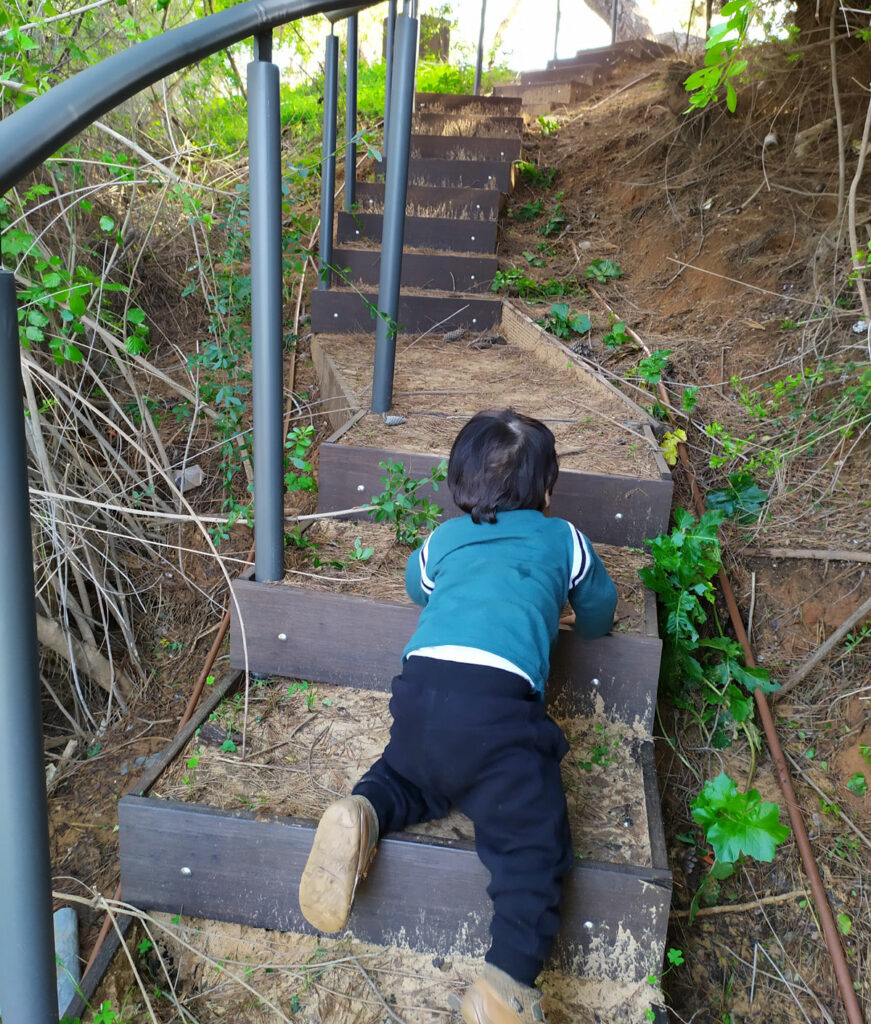
“Young children like to walk and climb. Stairs can be wonderful play structures. The key is to make everything in a park accommodating so that children can discover ways to play with it.” Flowers Hill Park, Herzelia
‘What children really need is loose materials, things they can touch and order. When my granddaughter was 2 she liked to sit on the ground with her cup and collect stones.”
What is wrong with today’s playgrounds? How do you design differently?
I generally include some formal play structures in the parks I design. These are necessary to meet the standards and they’re what people expect to find in a park. Children usually run to these familiar structures first, and only later do they discover the non-formal play treasures I hide for them, in full sight, in the rest of the park.Formal play structures are made of plastic and steel, often in bright colours “attacking” the eyes, and dull in textures and other sensory stimuli. Even when they try to provide other stimuli – such as sounds – it is also usually very artificial.Today’s play safety standards are very strict, which results in a standardisation of elements, and a clear- cut separation between what is for play and what isn’t.
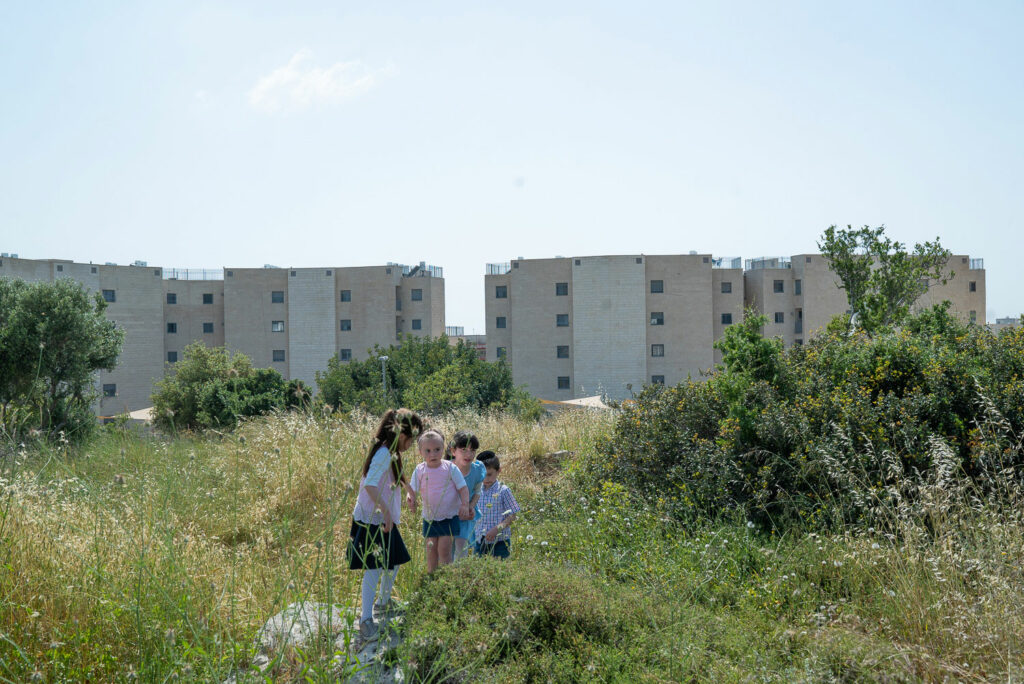
“As children grow, their movement ability grows and their independence grows. They start to move in larger circles, but always returning to the parent, their rock of safety, going on their discoveries and then back.” Letters Hill Park, Beit Shemesh
In my parks, I intentionally leave natural areas untouched, and accessible. I use stone outcrops, plants and scented herbs. I do this as much as I can, to provide for richer sensory experiences besides the visual.
Colourful play structures are not what interests small children. They’re very interested in details. They like different-sized pebbles, and having things they can go through to experience being on the inside and the outside, or on one side and the other. This is very rich and time-consuming play.
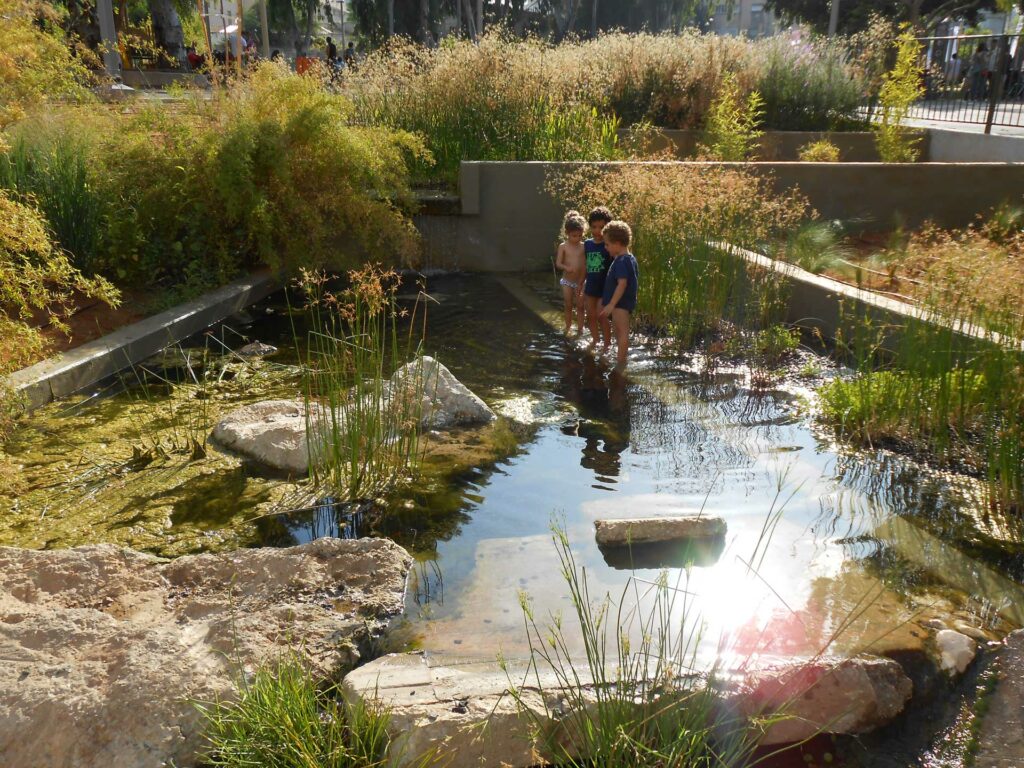
“This waterfall is all made of concrete debris which was there when we started working. The contractor kept wanting to take them away, and I kept saying ‘No no no, I will use them!’” Kiryat Sefer Park, Tel Aviv
You carried out an observational study at one of your own parks to see how children used it. You also observed your own grandchildren at play. What did you learn?
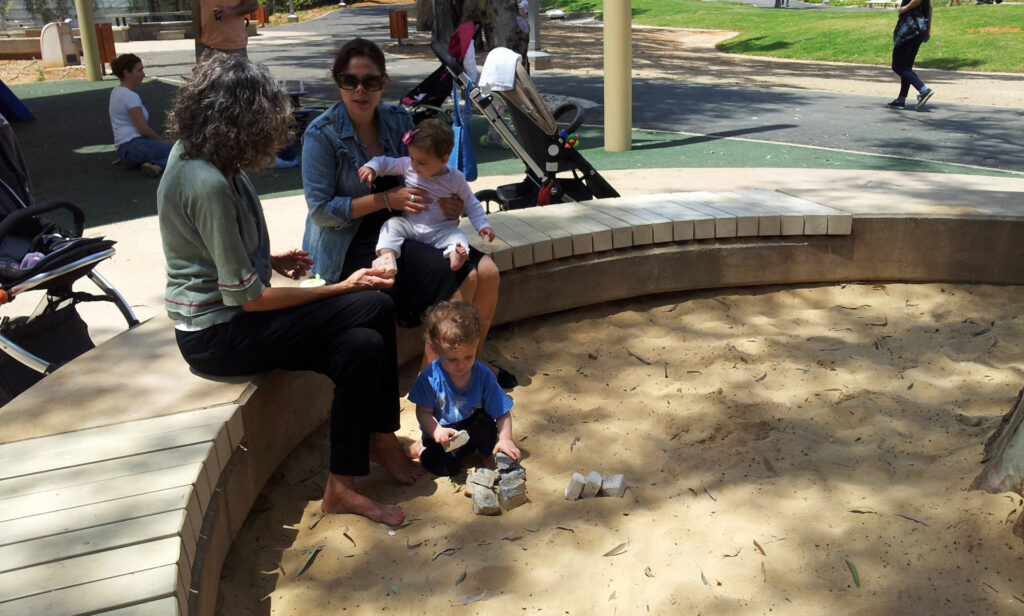
“Young children, at 2–3 years old, can sit in one place and really get into something – like building with a collection of stones and twigs.” Kiryat Sefer Park, Tel Aviv
One parent had a 5-year-old, and they came to the park every day. For the first five weeks, the child wanted to go to the slide. Then all of a sudden he lost interest in the slide, and they walked to a place which he called “the maze.” But I didn’t build a maze.The park has a community garden, and there are little paths between the different kind of herbs. He loved to hide and play there. Then he discovered the pool – a small pond with green string algae. Now he wraps stones in algae and makes sushi!
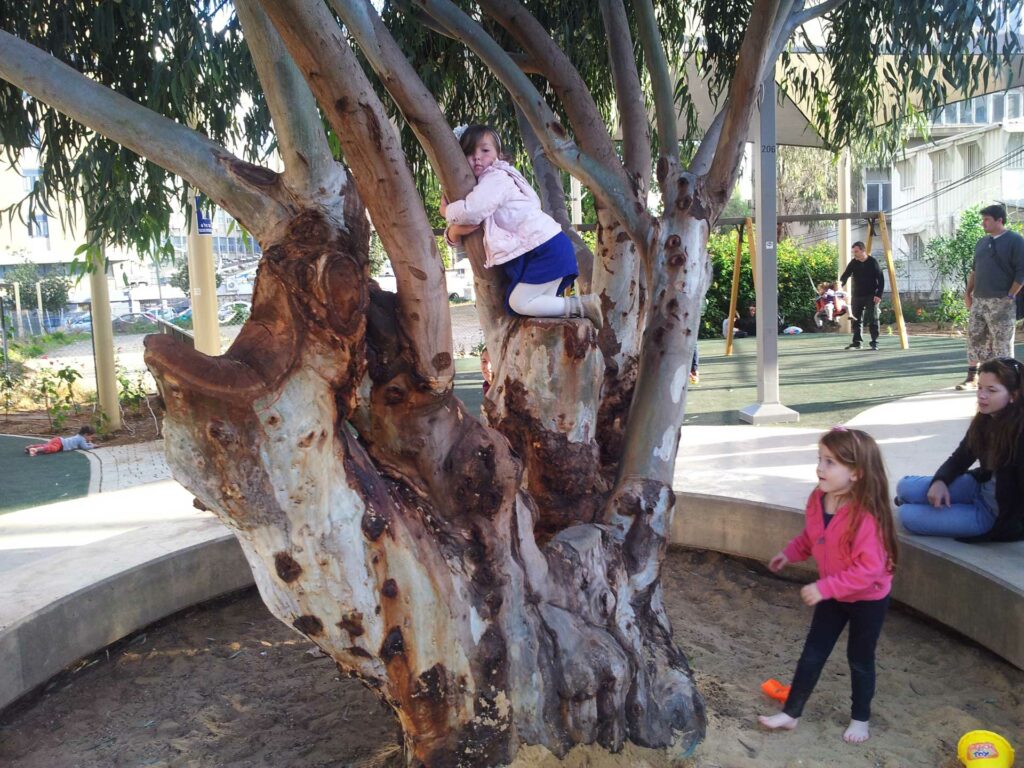
“Used material has time embedded into it so it’s already rich in itself – like logs, or living trees. These objects aren’t standardised , there are no two trees that look alike. Children find the details and look at them.” Kiryat Sefer Park, Tel Aviv
What made you want to design playgrounds?
I grew up in a kibbutz where I could go anywhere, touch things, explore, be in nature. It was very open. I had the kind of childhood that I want other children to have.

“Even play areas that are meant for toddlers are very artificial. I am especially against very strong colours, which I think are more for mayors, who want their investment to be seen. They don’t interest children at all.”
Flowers Hill Park, Herzelia
‘It would be too simplistic to say that the children who play in these parks will save the planet. But I hope they will grow up to appreciate
the planet.’
How is your design work linked to climate change? Does this impact children?
We are the problem, our culture is the problem – the way we consume the environment as if it is a commodity. I can’t say that I know how to solve the climate problem. But I do think that we need to develop new ways of thinking and living, and to step outside our current cultural way of being. It would be too simplistic to say that the children who play in these parks will save the planet. But I hope they will grow up to appreciate the planet. If you lack sufficient exposure to these kinds of experiences, you are in a high-risk situation. At least I’m giving them a chance.
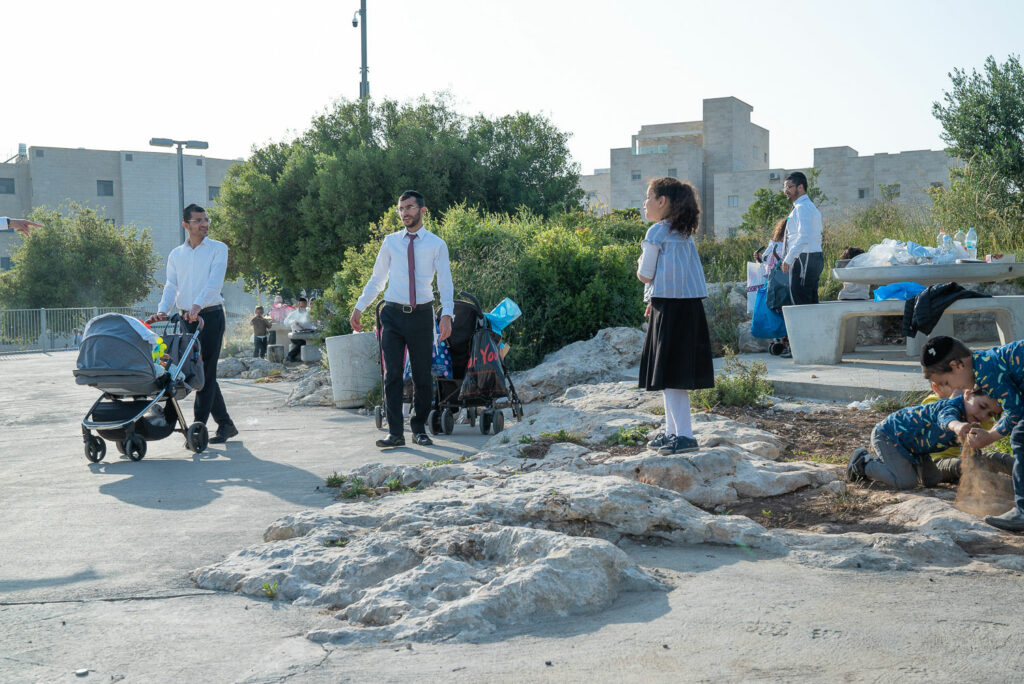
A child can just step onto the stone and walk into the wilderness, but they don’t have to. If their family doesn’t want to, they just continue along the path.” Letters Hill Park, Beit Shemesh
See how we use your personal data by reading our privacy statement.
This information is for research purposes and will not be added to our mailing list or used to send you unsolicited mail unless you opt-in.
See how we use your personal data by reading our privacy statement.